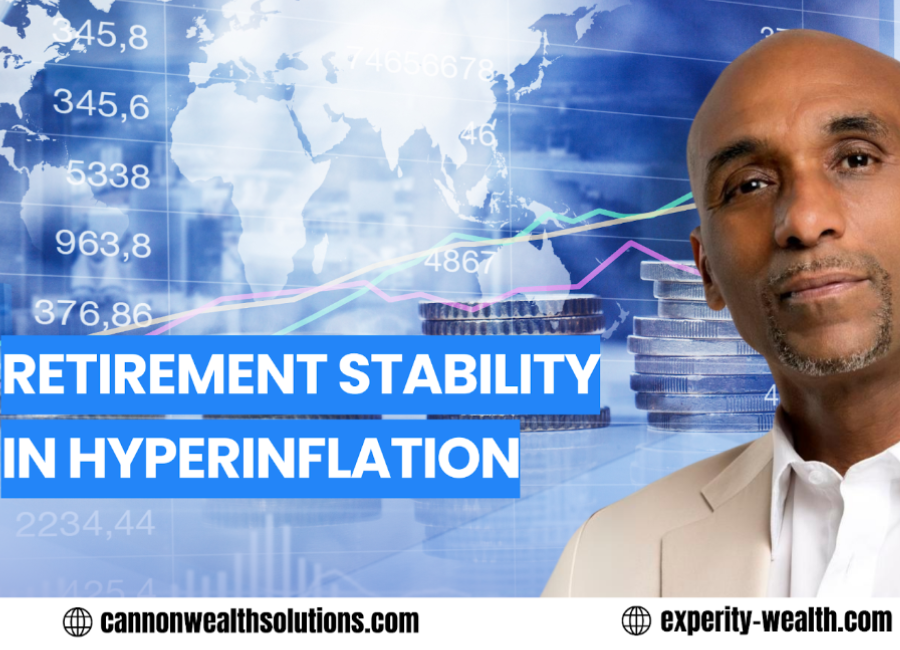The word ‘hyperinflation’ has become more than just a term in economics textbooks to a reality making understanding its impact on retirement planning crucial. With prices soaring and the value of currency plummeting, the traditional approaches to saving for retirement are being challenged. This brings us to the question: How can one secure their future in such uncertain times?
What is Hyperinflation?
Hyperinflation, a scenario where the price levels rise uncontrollably over a short period, is not just a theoretical concept. Historical examples, like Zimbabwe in the late 2000s and Germany in the 1920s, offer stark reminders of its devastating effects on economies and personal savings. Robert Cannon, an acclaimed financial expert and partner at ExperityCPA, highlights, “Hyperinflation turns the predictable into unpredictable, making it essential to rethink investment and saving strategies.”
Assessing Your Current Financial Situation
The first step is thoroughly evaluating your current financial standing. “Understanding the impact of hyperinflation on your existing assets is vital,” says Cannon. This involves a detailed look at your savings and investments and how they align with your retirement goals, potentially with the guidance of a financial advisor.
Adjusting Your Savings Strategy
Despite hyperinflation, the importance of consistent savings cannot be overstated. Diversifying your savings into different types of accounts and investments can help mitigate risks. Exploring different savings avenues becomes a necessity. Traditional savings accounts, high-yield accounts, and government bonds can each play a role in a well-rounded savings strategy. These diverse options help cushion your finances against the erosive effects of hyperinflation.
Cannon suggests, “Automatic savings plans are more critical than ever. They enforce discipline in saving habits, a key in such unpredictable times.” Automatic savings plans are a critical tool in ensuring consistent savings. By automatically transferring a set amount of money to savings or investment accounts, these plans help maintain a steady savings rate. This approach is particularly effective in combating the tendency to reduce savings during economic uncertainty.
Investment Strategies During Hyperinflation
Investment opportunities dramatically shift during hyperinflation. Safe investment options become a priority. “The goal is to balance risk and return. Investments that historically withstand inflationary pressures, like certain types of bonds and stocks, should be considered,” advises Cannon.
The challenge lies in balancing the risk and return of investments. Diversifying across various asset classes helps in managing this balance. It’s essential to reevaluate investment portfolios regularly to align with the changing economic environment and personal risk tolerance.
Pension Plans and Social Security
Pensions and Social Security are not immune to the effects of hyperinflation. It is essential to understand how these benefits adjust (or do not adjust) with rising inflation. Strategies to maximize these benefits become crucial parts of retirement planning. This may involve decisions about the timing of benefit claims or considering additional retirement income sources to supplement these benefits, ensuring a more stable financial future in retirement.
Knowing whether and how pension plans and Social Security benefits adjust with inflation is essential. Some plans may have built-in cost-of-living adjustments (COLAs), while others might not, significantly affecting their value over time.
Debt Management and Hyperinflation
Managing debt becomes a complex task during hyperinflation. High-interest debts can become more burdensome as inflation rises. Cannon warns, “Be vigilant about mortgage and loan repayments. Inflation can both erode and inflate the real value of debts.” High-interest debts, such as credit card balances and certain loans, can become more oppressive as inflation rises. It’s crucial to prioritize these debts and consider strategies to pay them down more quickly to avoid the compounding effect of high interest in a hyperinflation environment.
For long-term debts like mortgages and loans, it’s essential to understand how inflation affects their real value. While inflation can erode the value of fixed-rate debts, it can also increase the burden of variable-rate debts. Regular reviews of loan terms and considering refinancing options might be prudent strategies under such conditions.
Healthcare Planning and Insurance
As healthcare costs are likely to increase with hyperinflation, choosing the right health insurance plan and considering long-term care insurance becomes critical. This type of insurance can offer substantial coverage for long-term care needs, which may become prohibitively expensive during hyperinflation.
Selecting an appropriate health insurance plan requires careful consideration of coverage, premiums, and out-of-pocket costs. Evaluating different covers for their suitability in covering rising healthcare costs is essential.
Living Expenses and Budgeting
Adjusting your budget to cope with rising costs is essential. Cannon suggests, “Look for ways to reduce expenses without significantly altering your lifestyle. Also, plan for unexpected costs, especially during retirement.”
Adapting your budget involves critically reviewing and adjusting spending habits. This might mean finding more cost-effective options for regular expenses or cutting back on non-essential spending to accommodate the higher costs of essentials. For retirees, setting aside a contingency fund can provide a financial cushion to handle unforeseen expenses without derailing other financial plans.
Retirement Income Streams
Exploring various income streams is vital. “Consider annuities and other income-generating investments. They can provide a steady income stream, which is invaluable during hyperinflation,” Cannon adds.
Annuities can be a reliable source of income in retirement, offering regular payments over a specified period. Similarly, other investments that generate income, such as dividend-paying stocks or rental properties, can provide additional financial support, helping buffer hyperinflation’s effects on fixed incomes.
Apart from traditional retirement income sources like pensions and Social Security, exploring other avenues, such as part-time work or turning hobbies into income-generating activities, can also contribute to financial stability during retirement.
Estate Planning and Inheritance
Estate planning takes on a new dimension in hyperinflation times. Protecting your assets and ensuring your inheritance plans remain effective is crucial. Working with an estate planning attorney can offer the needed expertise. Effective inheritance planning ensures that your assets are passed on according to your wishes, with minimal tax implications. This involves updating wills and other legal documents to reflect current economic and personal circumstances.
Staying Informed and Flexible
Keeping abreast of economic trends and forecasts is essential. Flexibility in retirement planning, with regular reviews and adjustments, can help you stay aligned with changing economic conditions. Regularly monitoring economic indicators and forecasts helps anticipate changes that could affect retirement planning. This knowledge enables proactive adjustments to investment and savings strategies.
Securing your financial future during hyperinflation requires proactive steps and, often, professional advice. Cannon concludes, “While hyperinflation presents unprecedented challenges, with careful planning and strategic adjustments, it is possible to safeguard your retirement plans.” As we face these testing times, staying informed and adaptable is the key to securing a stable and comfortable retirement.







